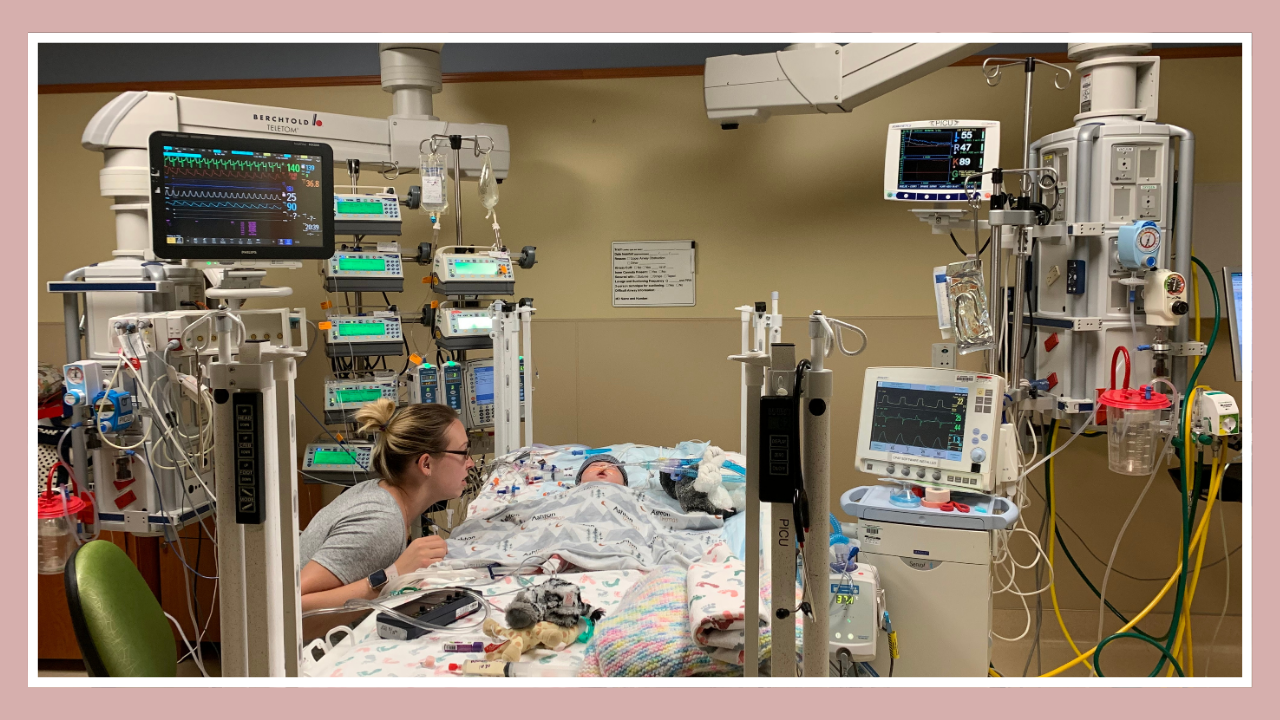
Milk Blisters and Breastfeeding: What Every New Mom Needs to Know
Oct 25, 2024Breastfeeding is a beautiful and natural way to nourish your baby, but it can come with its own set of challenges. One issue that many new moms face is milk blisters. If you're experiencing pain or discomfort while breastfeeding, you might be dealing with milk blisters. In this blog post, we'll explore everything you need to know about milk blisters and breastfeeding, including what they are, why they happen, and how to treat them.
What Are Milk Blisters?
Milk blisters, also known as blebs or nipple blisters, are small, painful spots that can appear on your nipples during breastfeeding. These blisters occur when milk gets trapped beneath the surface of the skin, causing a blockage in the milk ducts. Milk blisters can be a source of discomfort for many breastfeeding moms and may interfere with the breastfeeding process if not addressed properly.
Connection between Milk Blisters and Breastfeeding
The relationship between milk blisters and breastfeeding is important to understand. When you're breastfeeding, your body produces milk that flows through small ducts in your breasts and out through your nipples. Sometimes, these ducts can become blocked, leading to the formation of milk blisters. This connection between milk blisters and breastfeeding means that many new moms may experience this issue at some point during their breastfeeding journey.
Common Causes of Milk Blisters
Several factors can contribute to the development of milk blisters while breastfeeding:
- Poor latch: If your baby isn't latching onto your breast correctly, it can cause friction and damage to your nipples, leading to milk blisters.
- Oversupply of milk: Having too much milk can sometimes cause milk to back up in the ducts, potentially leading to milk blisters.
- Pressure on the breast: Wearing tight bras or sleeping on your stomach can put pressure on your breasts, potentially causing milk blisters.
- Skin irritation: Certain soaps, lotions, or breast pads can irritate your skin and contribute to milk blister formation.
- Thrush: A yeast infection in your baby's mouth or on your nipples can increase the likelihood of developing milk blisters.
How to Recognize Milk Blisters While Breastfeeding
It's essential to be able to identify milk blisters so you can address them quickly. Here are some signs to look out for:
- A small, white or yellow dot on your nipple, about the size of a pinhead
- Pain or discomfort while breastfeeding, especially when your baby first latches on
- A burning sensation in your nipple
- Reduced milk flow from the affected breast
- Swelling or redness around the blister
If you notice any of these symptoms while breastfeeding, you might be dealing with a milk blister.
How to Treat Milk Blisters
Dealing with milk blisters can be challenging, but there are several ways to manage them while continuing to breastfeed:
- Apply warm compresses: Before breastfeeding, apply a warm, moist compress to your nipple for a few minutes. This can help soften the skin and encourage the blister to open.
- Soak your breast: Soaking your breast in warm water mixed with Epsom salt can help draw out the milk blister.
- Gentle massage: After applying heat, gently massage the area around the milk blister to help release the trapped milk.
- Continue breastfeeding: Although it might be uncomfortable, continuing to breastfeed can help clear the blockage. Try different breastfeeding positions to find one that's most comfortable.Use a breast pump: If breastfeeding is too painful, using a breast pump can help maintain your milk supply and relieve pressure.
- Consult a healthcare provider: If the milk blister persists or becomes very painful, consult your doctor or a lactation consultant for additional treatment options.
How to Prevent Milk Blisters While Breastfeeding
While it's not always possible to prevent milk blisters, there are steps you can take to reduce your risk:
- Make sure its a proper latch: Work with a lactation consultant to make sure your baby is latching correctly.
- Change breastfeeding positions: Vary your breastfeeding positions to prevent pressure on the same areas of your breast.
- Avoid tight clothing: Wear comfortable, loose-fitting bras and clothing that don't put pressure on your breasts.
- Stay hydrated: Drink plenty of water to help maintain a good milk flow.
- Practice good hygiene: Keep your breasts clean and dry between feedings.
- Address oversupply issues: If you have an oversupply of milk, talk to a lactation consultant about strategies to manage it.
When to Seek Professional Help for Milk Blisters and Breastfeeding
While many milk blisters can be managed at home, there are times when you should seek professional help:
- If the milk blister persists for more than a week despite home treatment
- If you experience severe pain or discomfort
- If you notice signs of infection, such as fever, redness, or swelling
- If you're having difficulty breastfeeding due to the milk blister
- If you're experiencing recurrent milk blisters
In these cases, consult with your healthcare provider or a lactation consultant. They can provide additional treatment options and support to help you continue breastfeeding comfortably.
Milk blisters can be a challenging aspect of breastfeeding, but with the right knowledge and support, you can overcome this issue. Remember that the connection between milk blisters and breastfeeding is common, and many moms have successfully dealt with this problem.
By understanding the causes of milk blisters, recognizing the symptoms, and knowing how to treat them, you can continue to provide your baby with the benefits of breastfeeding. Don't let milk blisters discourage you – with patience and proper care, you can work through this issue and enjoy a positive breastfeeding experience with your little one.
Dealing with milk blisters and other breastfeeding challenges? Don't let these obstacles derail your breastfeeding journey. Transform your postpartum experience with expert guidance and support!
Get the entire Breastfeeding Blueprint program for FREE when you join The Postpartum Shift today!








